
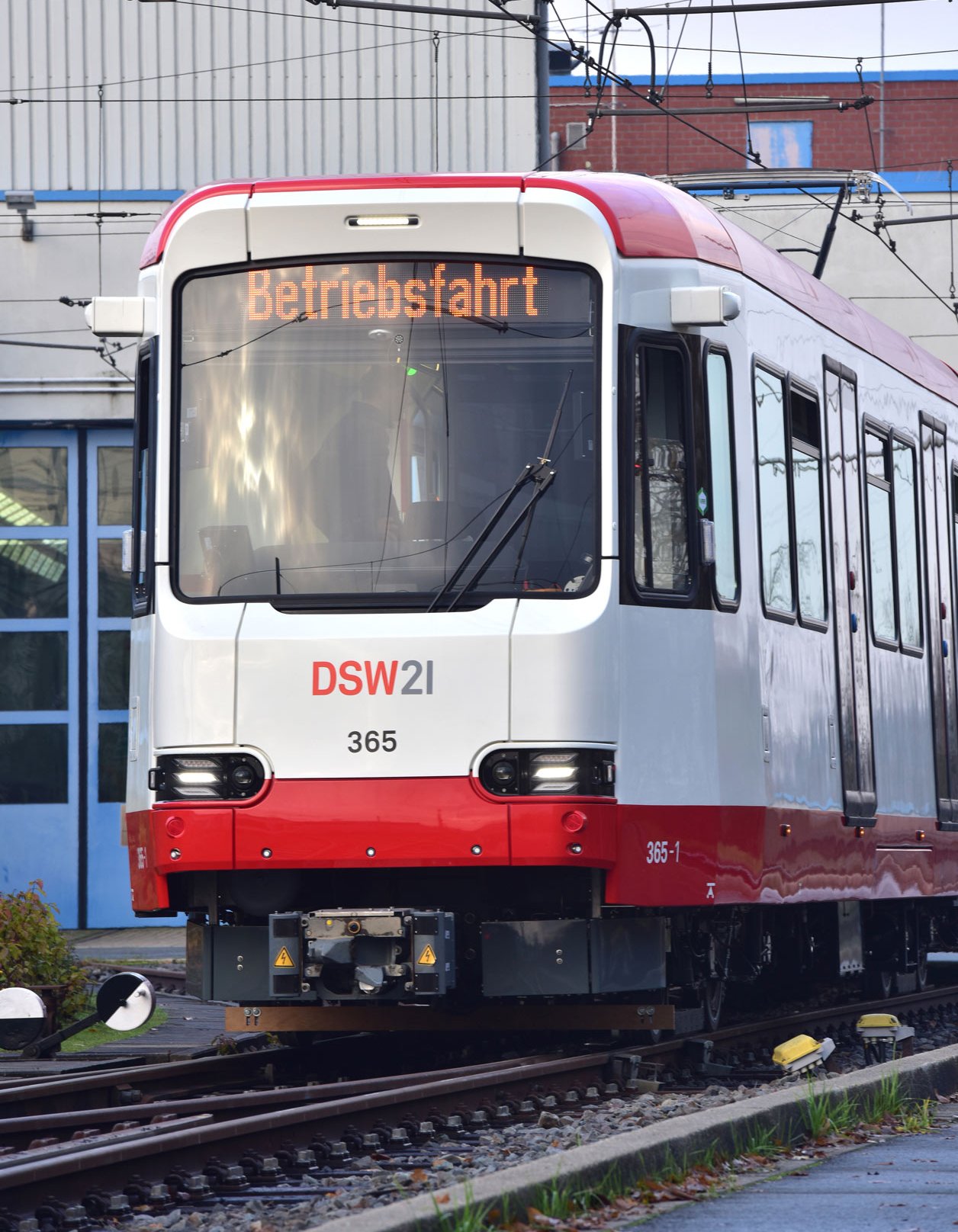
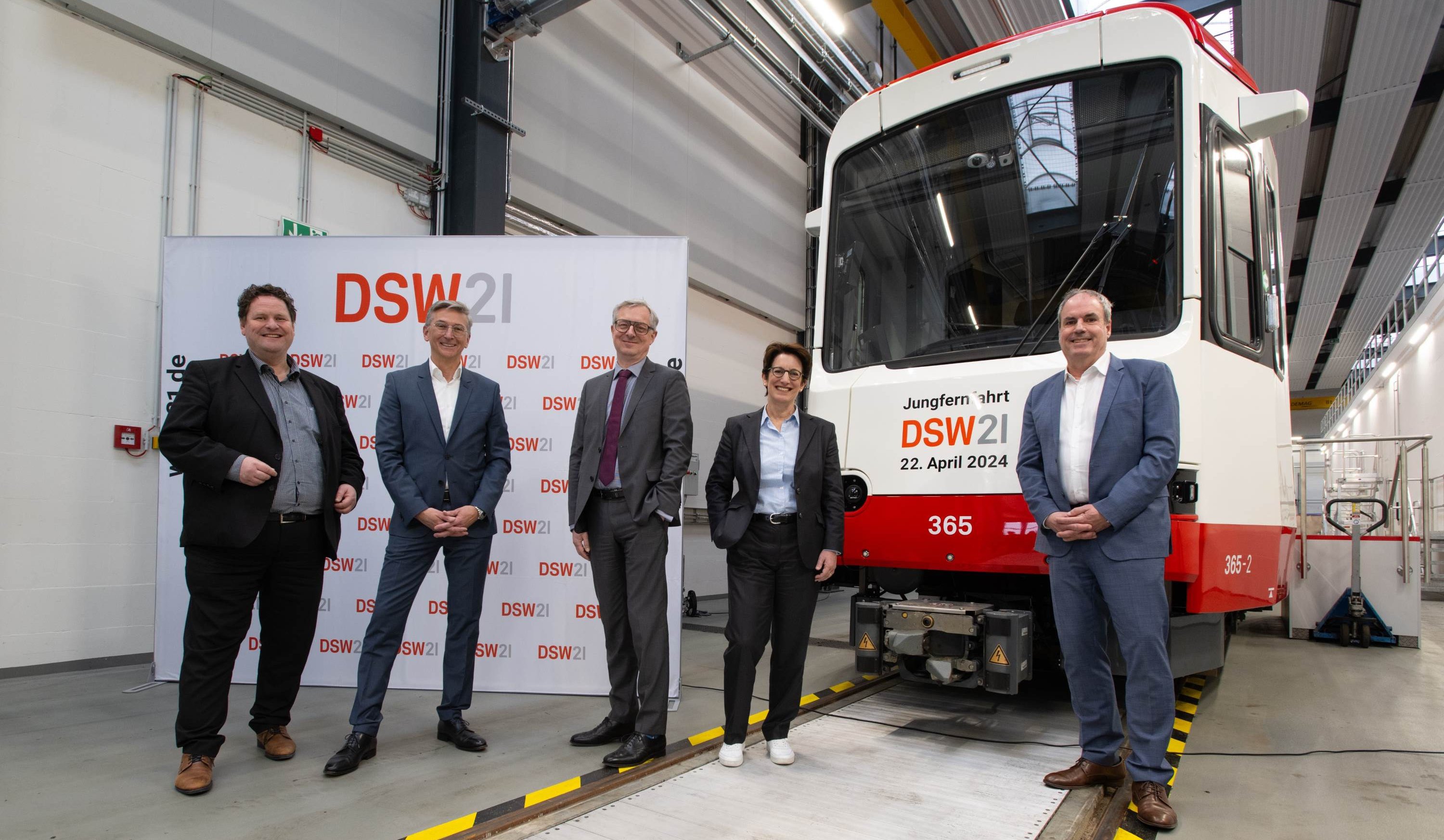
Starting signal for the future: DSW21 presents new generation of high-floor light rail vehicles in Dortmund
Kick-off for the new generation of high-floor trams from DSW21: from 23 April, several ultra-modern trams will be in service on the Dortmund network. You will benefit from greater accessibility, more space in the special-use areas, modern equipment and new "infotainment".
High-floor trams (B-car project)
- 34 new high-floor trams (B80D): manufacturer HeiterBlick and Kiepe Electric, model "Vamos", type "Dortmund"
- 6-axle, length 28 m, weight 38 tonnes
- 64 railways to be modernised in identical design (B80C): Manufacturer DUEWAG, vintage 1986-1999, 43 6-axle, 21 8-axle, length 28 or 38 m, weight 38 t or 48 t
- 10 railways to be taken out of service (B100S): manufacturer DUEWAG, built in 1974
- A total of 98 railways will be newly purchased or modernised
- Total volume of the B-car project around € 250 million
Low-floor trams
- 47 low-floor trams (NGT8, built 2007-2011) will remain in the fleet
Total DSW21 light rail fleet
- Currently a total of 121 light rail vehicles
- 145 light rail vehicles in total in future
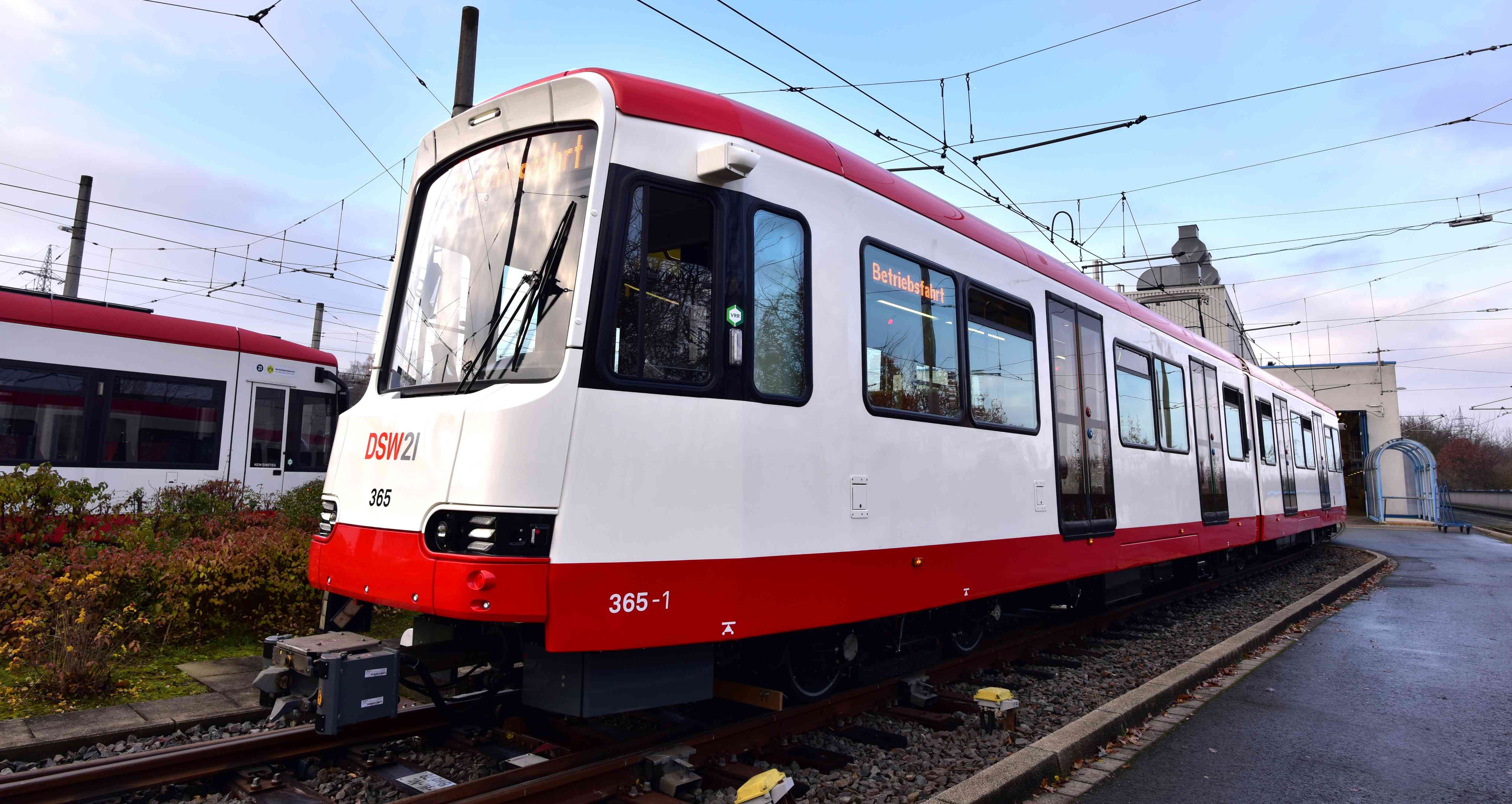

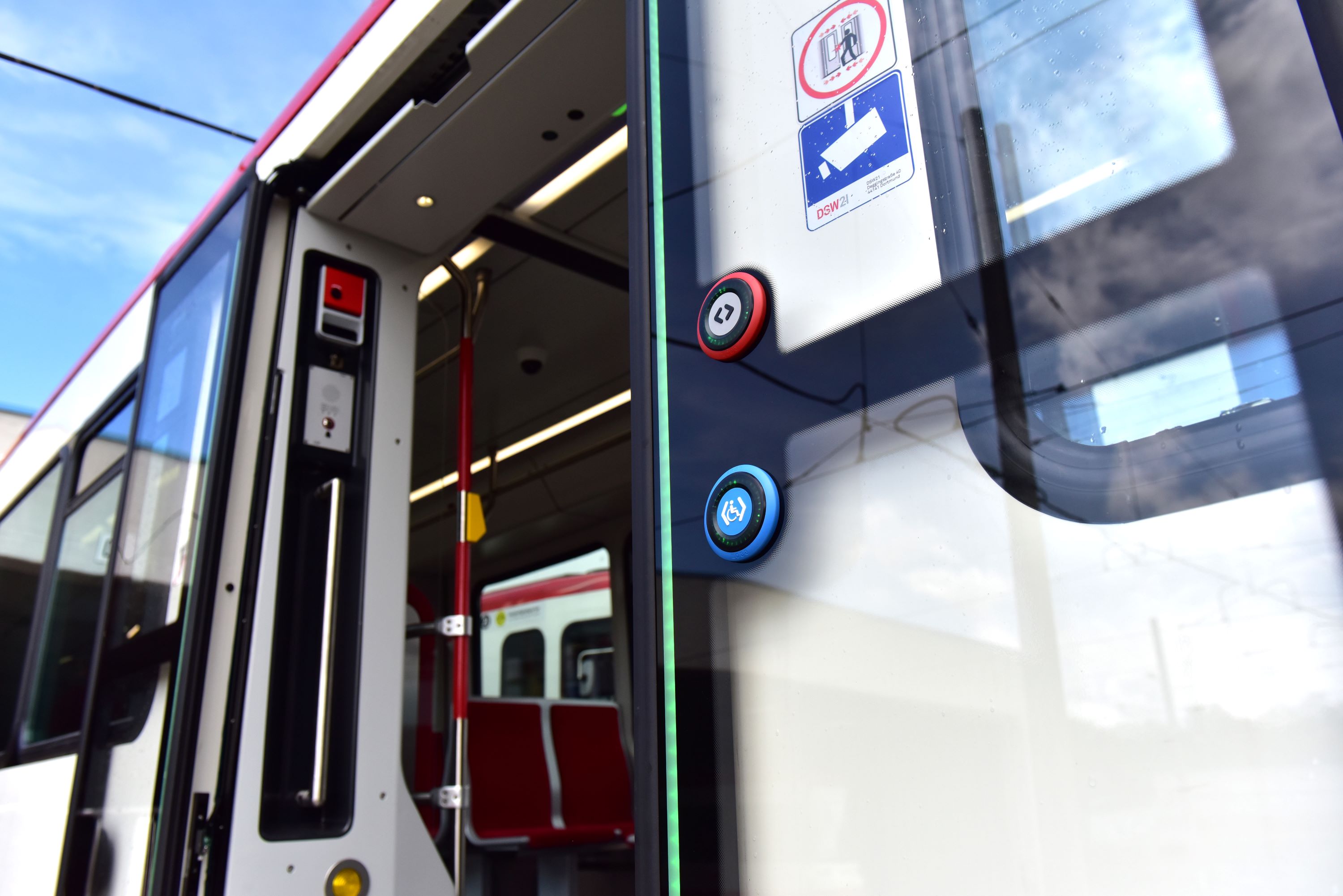

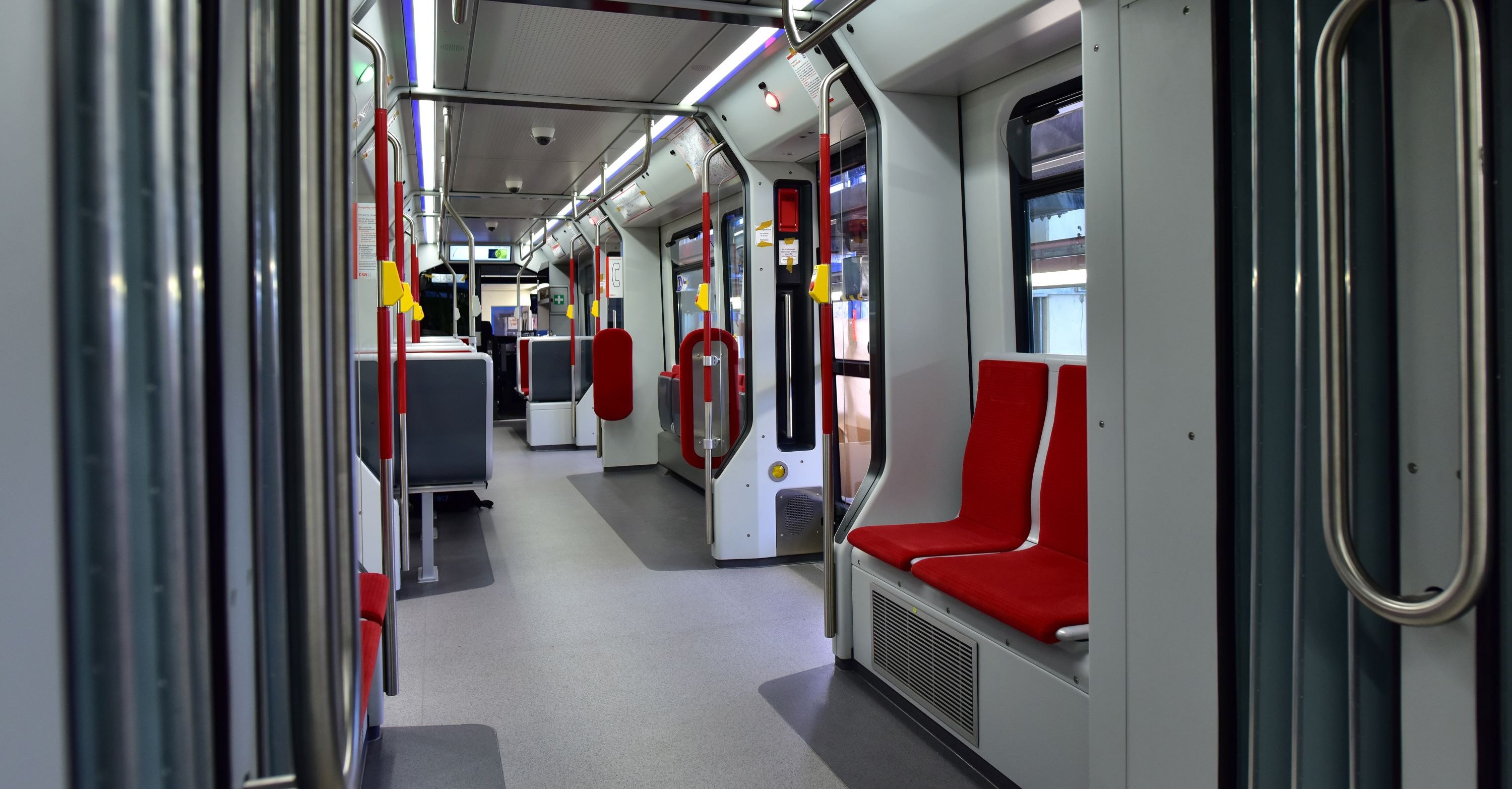

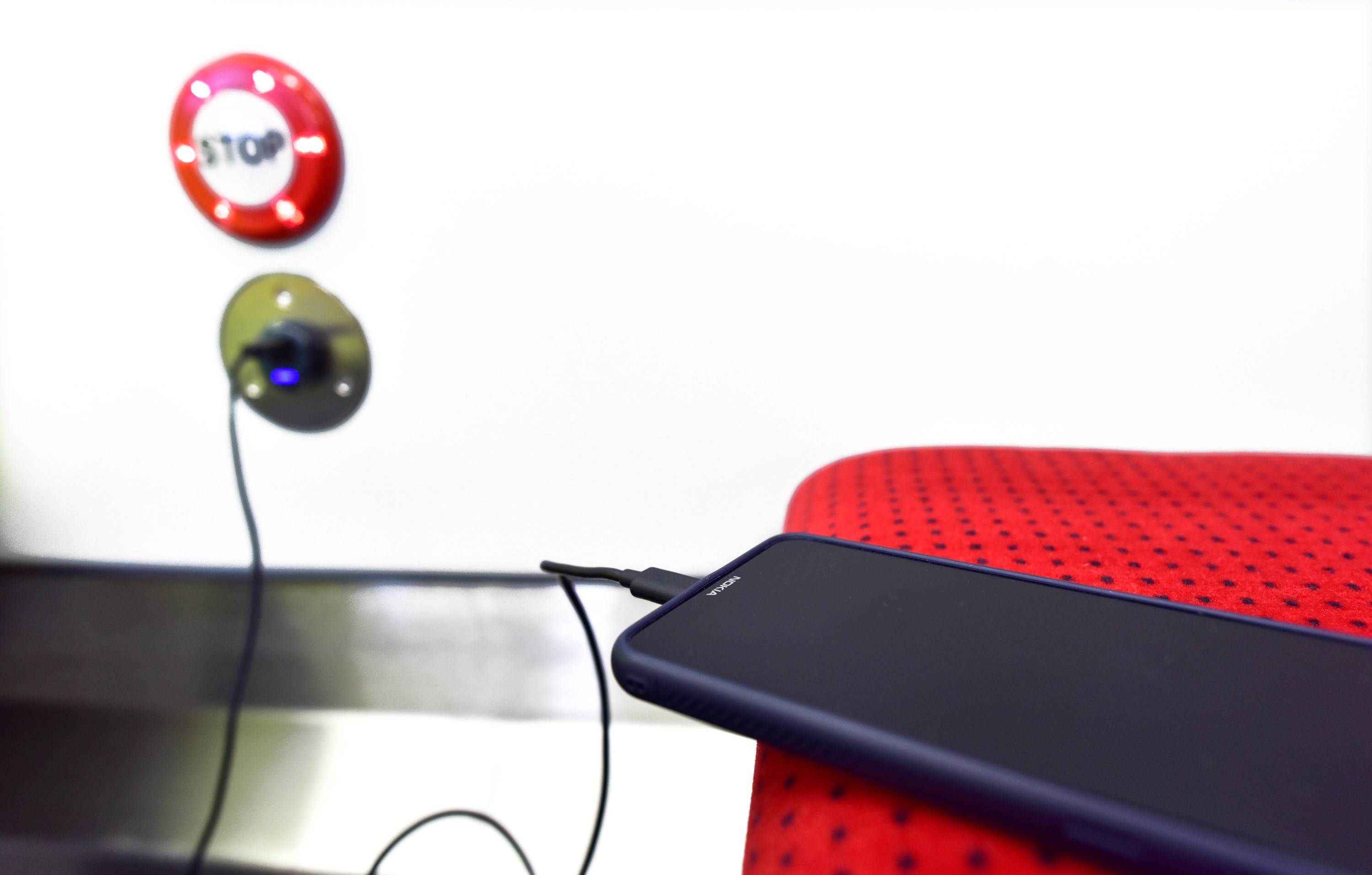



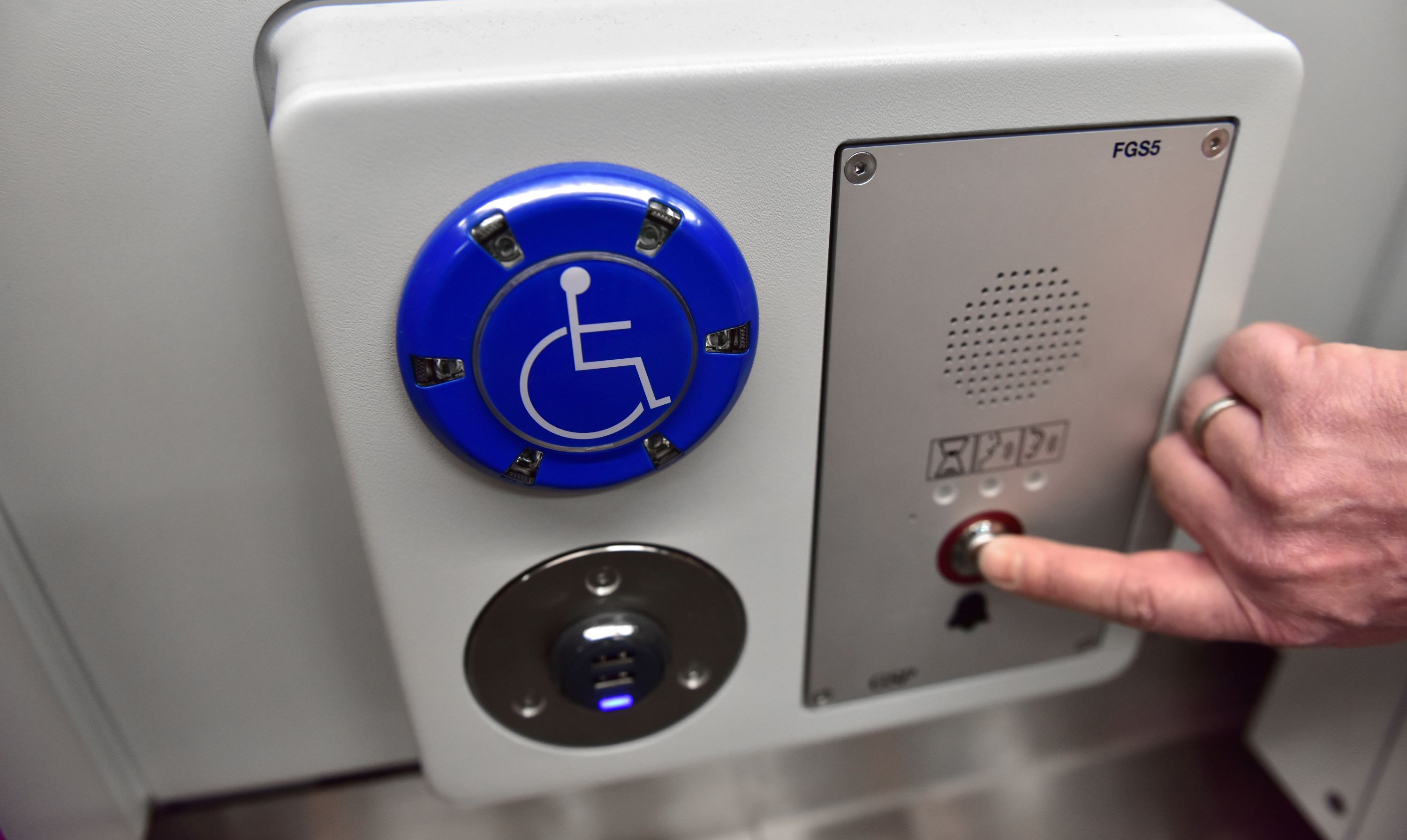

{"carouselInterval":3500,"carouselLength":6}
Future-orientated mobility: a new era for Dortmund's light rail network
Six ultra-modern trams will be in operation every day from 23 April, with more vehicles being added at short intervals. And these are also needed, emphasises DSW21 CEO Heike Heim: "120,000 DSW21 passengers alone currently have the DeutschlandTicket in their pocket or on their mobile phone - and the trend is rising."
DSW21 has ordered a total of 34 new high-floor trams, while the 64 trams in the existing fleet will be modernised to the same design. "With the expected total of twelve additional new trams, which we will be able to put into operation by mid-June, we will then also be well equipped for the challenges posed by the home games and public viewings during the European Football Championship," emphasises Jaeger.
Time savings through parallel inspections
"We are very pleased that we were able to successfully complete the extremely complex approval process for the first new light rail vehicle today. It was difficult for the vehicle manufacturers HeiterBlick and Kiepe Electric, and therefore also for us, to estimate the exact scope and time horizon in advance," explains DSW21 operations manager and authorised technical representative Ralf Habbes.
16,000 pages of documents had to be prepared and checked for the so-called type test of the first railway according to the checklist of the Technical Supervisory Authority (TAB).
A head start through innovative features
The 34 new and 64 existing high-floor light rail vehicles (B-cars), which will be modernised to the same design by 2031, boast a variety of visible and invisible features that will directly benefit passengers. The 28-metre-long and 38-tonne trains are true pioneers not only in terms of energy efficiency, accessibility and safety, but also in terms of interior design, comfort and passenger information.
Vehicle insulation and lowering are even unique in Germany, making them role models for the entire local transport sector. "
DSW21 is the first transport company in Germany to introduce trams with lowered air pressure into its network. The new trams can kneel 3 cm on request - similar to buses. Together with structural measures, this "kneeling" ensures that the height difference to the platform is only a maximum of 5 cm across the entire network. A decisive improvement in accessibility for people with limited mobility, such as people with walking disabilities or wheelchair users. Passengers with pushchairs or walking frames will also benefit.
DSW21 is breaking new ground in terms of energy efficiency and is providing the trains with insulation that is unique in Germany. Tests in an air-conditioning duct, which were passed with top marks, certify top values for heating and energy: the installed heating output is reduced by more than 70 % from 100 kW to just 27 kW, without passengers noticing. This is because the carriages can be heated more effectively in the cold season - in summer, conversely, they heat up less quickly. The electricity consumption of the entire high-floor fleet is reduced by around 4.8 million kWh per year, which corresponds to the annual consumption of more than 1,000 four-person households. A pleasant side effect of the unique insulation for passengers is that the vehicle is much quieter than before.
The light rail fleet, which currently consists of 121 high- and low-floor vehicles, has been climate-friendly for many years, as it runs on 100% DEW21 green electricity. With the new vehicles, however, DSW21 is taking a big step forward in terms of its eco-balance on several levels, emphasises Ralf Habbes, authorised technical representative and operations manager at DSW21: "The energy consumption for traction current and electricity for heating will fall by around 12.5% when calculated for the entire fleet. At current prices, this results in annual savings of around one million euros."
The new vehicles have a "door traffic light" with eye-catching LED lighting. Green signals: Passengers can get on and off in a relaxed manner, flashing light means: the closing process is beginning. Red means the doors are closed: The train is ready to depart. This is intended to minimise dangerous situations that can arise in the future due to attempts to board with the doors closed. A pleasant side effect: the smoother passenger flow ensures greater punctuality.
Ultrasonic sensors on the vehicle heads illuminate blind spots on the new trains. At the rear, sensors and cameras monitor the coupling area and the space between the cars. The drivers are shown the camera images on a monitor. This provides effective protection against accidents, especially when visibility is poor, for example in the evening or at dark times of the year.
Wheelchairs, walking frames and pushchairs take up space and must be securely positioned on the train. The special-use areas in the new carriages are significantly larger and can be reached immediately from all doors. This improvement is of particular benefit to passengers with limited mobility. But anyone travelling with a pushchair, luggage or a bicycle, for example, now also has more space. Like other accessibility measures such as optimised buttons and high-contrast grab rails, this improvement was agreed with the City of Dortmund's Disability Policy Network (BPN).
Around 1,100 passengers took part in a large-scale seat test at the beginning of 2019 and voted on how the new seats should be designed: Rather thick or rather thinner upholstery? Fabric or artificial leather? Normal or high backrest? The passengers' wishes - noticeable upholstery, a fabric cover and a slightly higher backrest - were taken into account when ordering a total of around 5,000 seats for the new and modernised trains.
The interior of the trains has been completely redesigned and offers an inviting environment with appealing materials. "This includes an ambient lighting concept, colour-contrasting floors and a modern infotainment and passenger system," says Dr Heinz-Josef Pohlmann, Head of Operations and Marketing at DSW21. Can you briefly surf the Internet during the journey and quickly charge your mobile phone? "Wi-Fi and USB sockets are standard equipment on the new and modernised trains," promises Pohlmann.